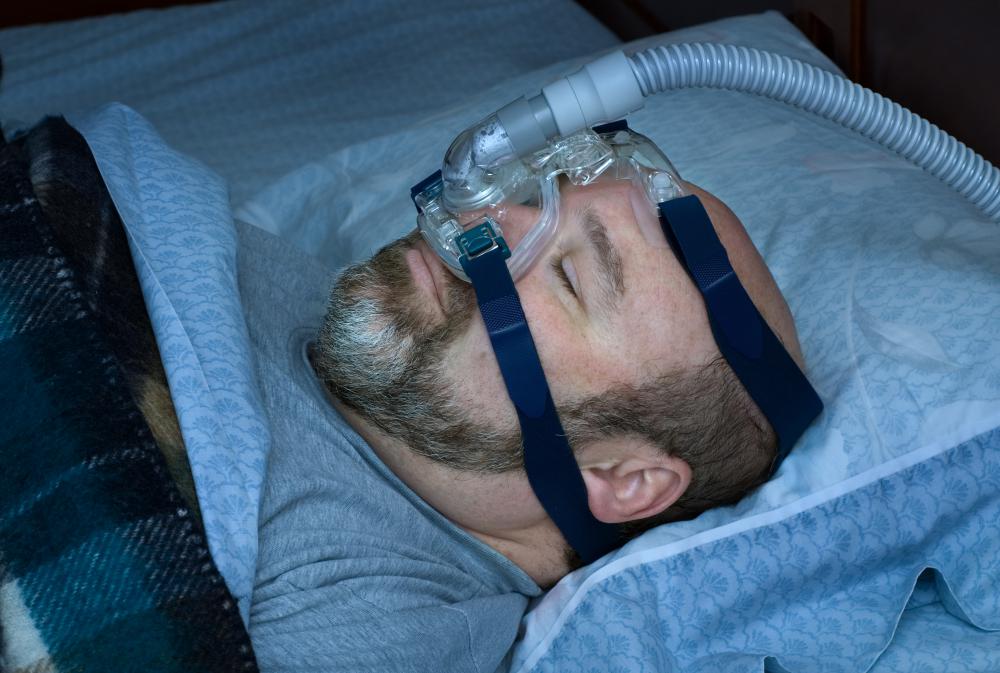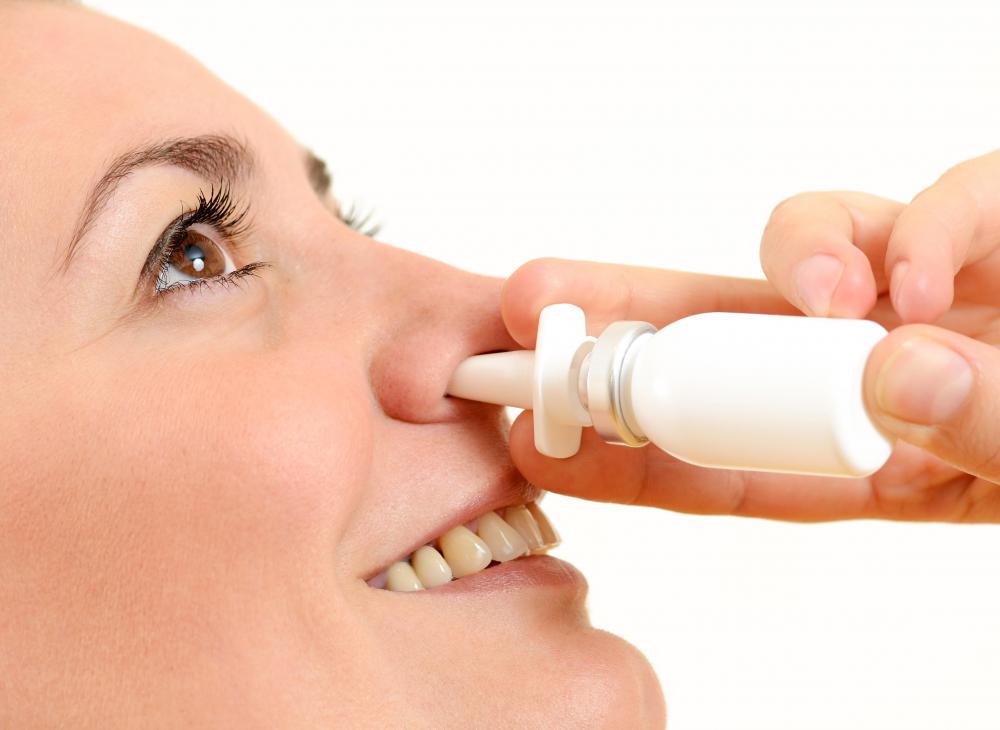At WiseGEEK, we're committed to delivering accurate, trustworthy information. Our expert-authored content is rigorously fact-checked and sourced from credible authorities. Discover how we uphold the highest standards in providing you with reliable knowledge.
What is Bilevel CPAP?
Bilevel CPAP, also known as BiPAP, refers to a system of respiratory therapy that delivers oxygen to the airways by mechanical means to promote a normal pattern of breathing. In fact, CPAP stands for Continuous Positive Airway Pressure. CPAP machines are primarily intended for patients with obstructive or central sleep apnea for use while sleeping and must be prescribed by a physician.
The physician also determines the correct amount of air pressure to be exerted by the machine based on an overnight observation of the patient in a sleep laboratory as well as the results of a polysomnography. This amount is termed titrated pressure, which is measured in centimeters of water and expressed as cm H2O. This is the amount of compressed air that will be pushed from the CPAP machine through a hose connected to the patient’s nose via a mask. Most sleep apnea patients respond to a titrated pressure ranging from 6 to 14 cm H2O. However, some CPAP machines, including a bilevel CPAP system, can exceed these levels up to 30 cm H2O.

There is another distinction between regular CPAP machines and bilevel CPAP systems. In the former, the patient is required to exhale against the same amount of titrated pressure used to force compressed air into the air passages. In other words, the rate of pressure remains the same with both events and the patient must often work a bit to exhale against it. With bilevel CPAP systems, however, there are two titrated pressure settings, one for inhalation and the other for exhalation, with the latter being an exact setting. This is an adaptation of CPAP machines with C-Flex, which are much like regular CPCP systems but have an additional feature that automatically reduces the pressure slightly as the patient begins to exhale.

As might be expected, bilevel CPAP systems are typically higher priced than ordinary CPAP machines. They also come with another set of terminology. For instance, the titrated pressure setting for inhalation is referred to as inspiratory positive airway pressure, or IPAP. Likewise, the pressure setting for exhalation is known as expiratory positive airway pressure, or EPAP. The difference between IPAP and EPAP is called the pressure support.

There have been recent advances made to bilevel CPAP machines. These enhanced systems feature an S/T mode, which stands for "spontaneous timed." Its purpose is to activate the machine to force inhalation in the event the patient stops breathing for a specified length of time during sleep. This ensures that the patient receives the required number of breaths per minute to carry sufficient oxygen to the blood. In some cases, this feature may even be life saving.
AS FEATURED ON:
AS FEATURED ON:

















Discussion Comments
CPAP is provided by a blower which blows air into the upper airway to keep it open so that the patient can breathe room air, not oxygen, although it improves oxygen saturation in the blood. It does not use compressed air!
Post your comments